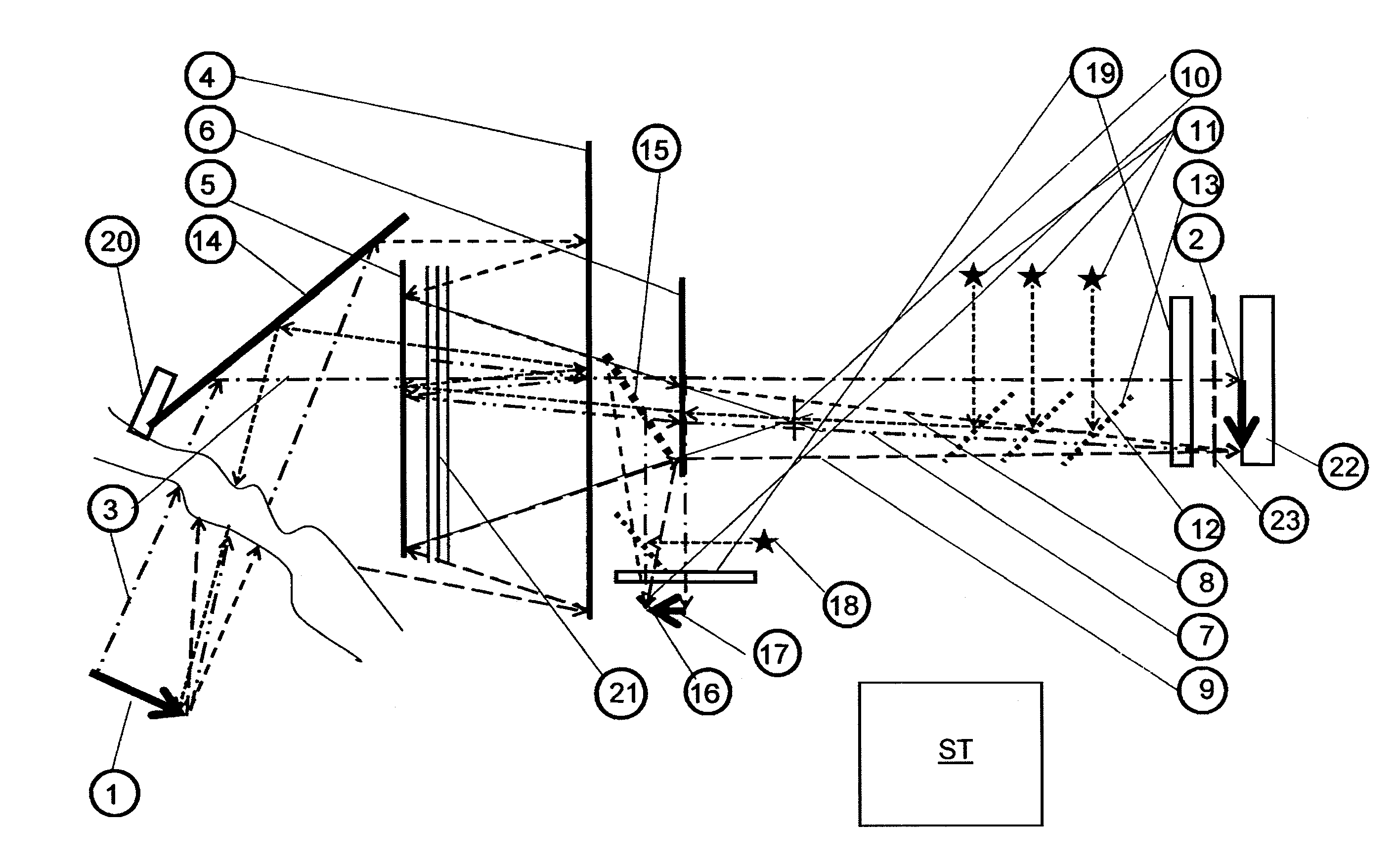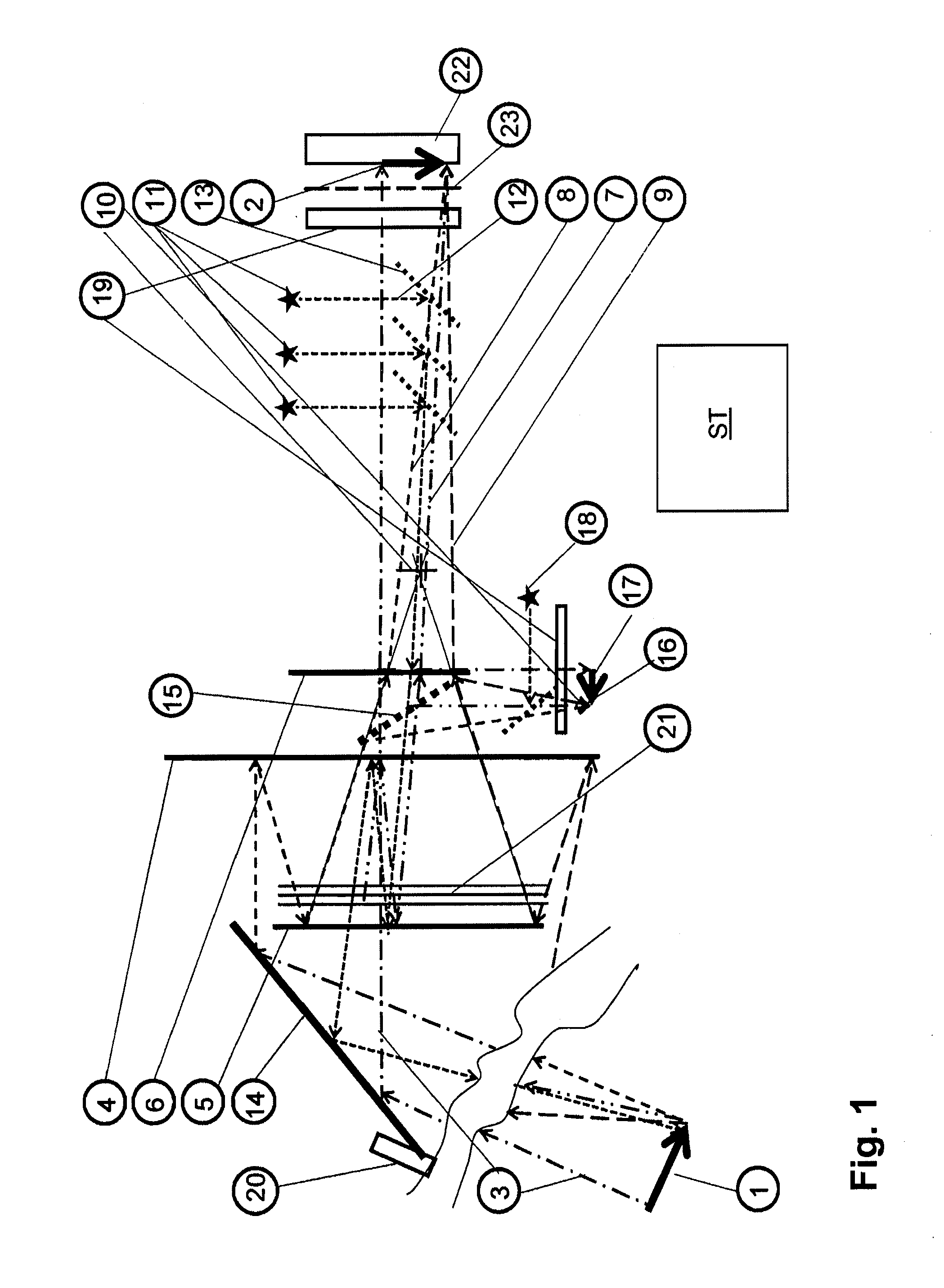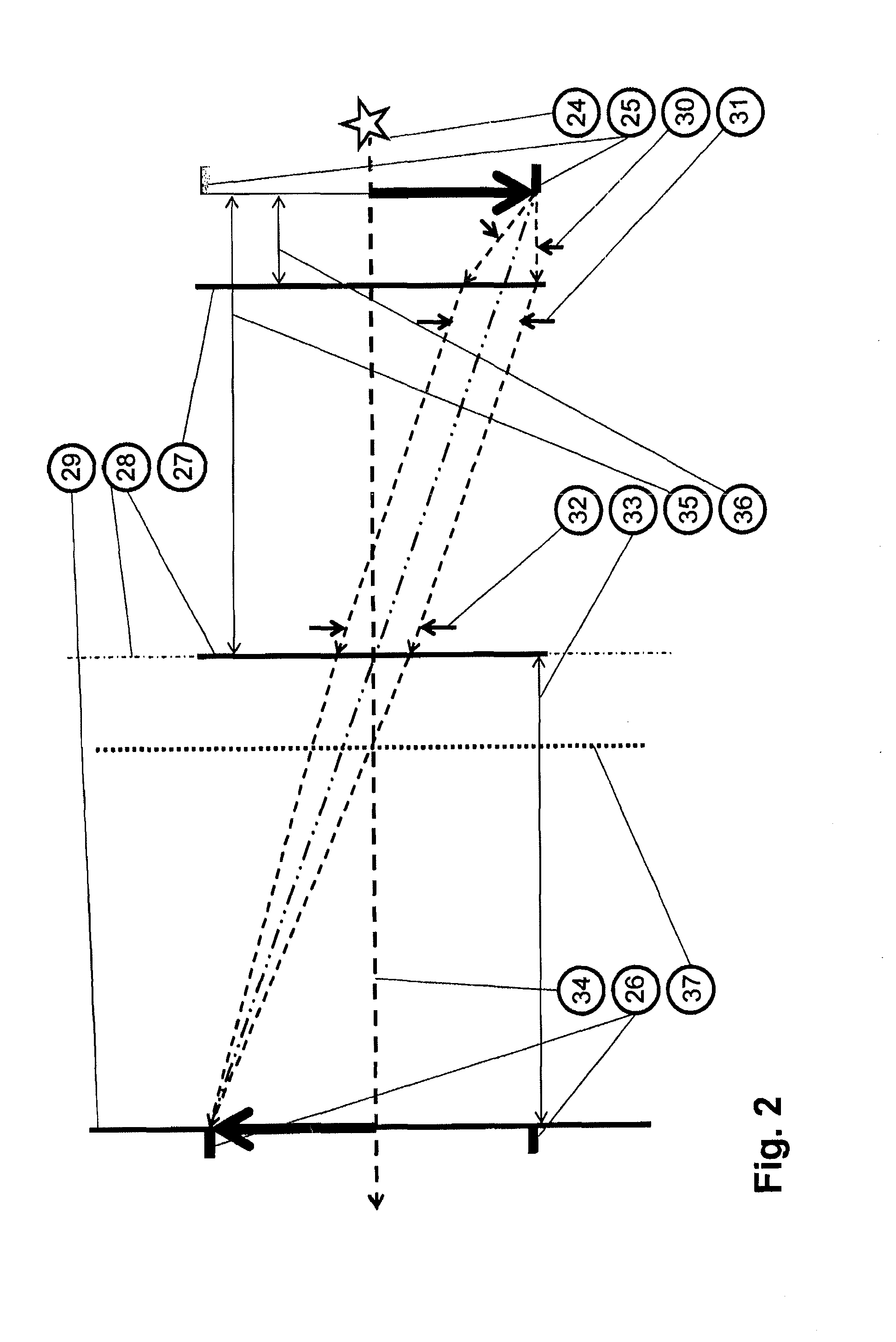Camera System and Method for Observing Objects at Great Distances, in Particular for Monitoring Target Objects at Night, in Mist, Dust or Rain
a camera system and object technology, applied in the field of cameras and methods for observing objects at a large distance, can solve the problems of inability to monitor objects 24 hours a day, inability to use real-time surveillance, and insufficient natural illumination of known cameras, and achieve the effect of greater color contrast and high nir sensitivity
- Summary
- Abstract
- Description
- Claims
- Application Information
AI Technical Summary
Benefits of technology
Problems solved by technology
Method used
Image
Examples
Embodiment Construction
[0067]FIG. 1 shows one embodiment of a multispectral reconnaissance camera, with its own artificial illumination.
[0068]A sufficiently illuminated target object 1 at a large distance (10 to 40 km) is homed on along a line of sight 3 by a telescope 4, 5, and 6, and generates a true image 2 of the target object 1 on the indium gallium arsenide CCD chip of a CCD camera 22 for the near infrared region (sensitive from 0.8 μm to 1.7 μm, with a size of 9.6 mm×7.7 mm, pixel size 30 μm, image size 320 columns by 250 rows).
[0069]The telescope 4, 5, 6 consists of a gold-coated, elliptical primary mirror (“main mirror”) 4 with a diameter of 32 cm (12.5 inches) and a focal distance of 2.54 m, a gold-coated, spherical secondary mirror (“capturing mirror”) 5 in a Cassegraine arrangement, and a special Barlow lens 6, in this case the “fluorite flatfield converter” (from the Baader company), which lengthens the focal distance of the primary mirror 4 adjustably from 4- to 9-times (max 22.86 meters), a...
PUM
 Login to View More
Login to View More Abstract
Description
Claims
Application Information
 Login to View More
Login to View More - R&D
- Intellectual Property
- Life Sciences
- Materials
- Tech Scout
- Unparalleled Data Quality
- Higher Quality Content
- 60% Fewer Hallucinations
Browse by: Latest US Patents, China's latest patents, Technical Efficacy Thesaurus, Application Domain, Technology Topic, Popular Technical Reports.
© 2025 PatSnap. All rights reserved.Legal|Privacy policy|Modern Slavery Act Transparency Statement|Sitemap|About US| Contact US: help@patsnap.com



